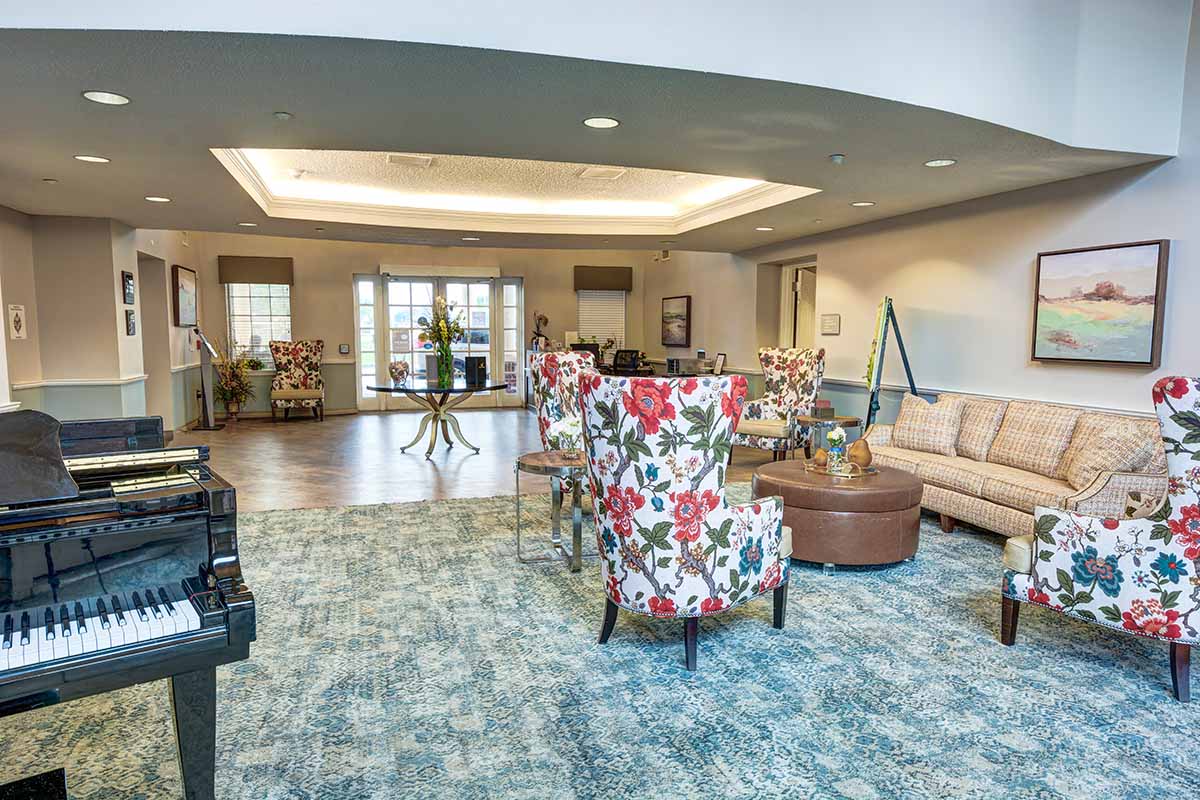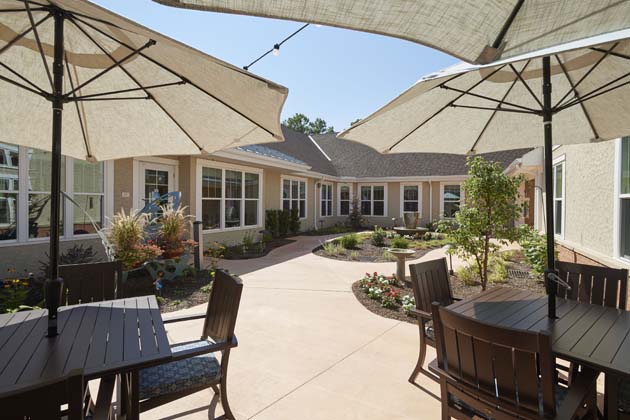Boutique Memory Care That Feels Like a Personalized Retreat
Everything About Memory Treatment Services: Why Small Memory Care Houses Are a Wonderful Option
Memory care services play a vital function in supporting people with Alzheimer's and mental deterioration. Little memory care homes stand out for their tailored technique and intimate setting. With reduced staff-to-resident ratios, these homes cultivate more powerful connections and tailored care. Homeowners profit from improved social interactions and a safe setting. As families explore options, recognizing the one-of-a-kind benefits of little memory treatment homes ends up being important. What variables should be taken into consideration when picking the ideal home?
Comprehending Memory Care Services
While many might be acquainted with general senior care options, understanding memory treatment solutions is essential for families encountering the obstacles of cognitive decline. Memory care specifically caters to individuals with conditions such as Alzheimer's illness and other types of mental deterioration. These solutions give an organized environment that concentrates on boosting the lifestyle for citizens with specialized care and support.Memory care facilities are designed to assure safety and security and protection, usually including secured environments to stop straying. Trained personnel are available around the clock to assist with everyday activities, medicine monitoring, and personal care. Furthermore, memory treatment programs usually include cognitive stimulation activities, tailored to engage citizens and advertise mental well-being. Households can gain from recognizing these solutions, as they enable notified choices regarding their enjoyed ones' care, ensuring that their certain requirements and choices are dealt with in a caring and encouraging manner.
The Benefits of Tiny Memory Care Houses
Little memory treatment homes offer unique advantages that can greatly enhance the high quality of life for homeowners with cognitive impairments. One significant benefit is the intimate setting, which enables customized interactions among staff and homeowners. This smaller sized setup promotes meaningful relationships, lowering sensations of isolation and anxiety frequently experienced by people with memory issues.Additionally, the reduced staff-to-resident ratio in tiny memory treatment homes enables caregivers to provide even more alert supervision and assistance. This strategy not only enhances safety and security however also advertises a complacency for the residents.Moreover, small memory treatment homes can adapt quickly to the one-of-a-kind requirements and preferences of each homeowner, permitting a much more homelike ambience. Such an atmosphere can encourage social involvement and involvement in activities, inevitably enhancing the daily experiences of those coping with cognitive impairments.
Personalized Care Plans for Homeowners
Individualized treatment strategies are important in memory care homes, as they provide to the distinct needs and preferences of each local. These plans start with complete evaluations carried out by competent professionals, that examine cognitive abilities, clinical history, and individual interests. This customized approach warranties that care is not just reliable yet likewise considerate of each individual's dignity and autonomy.Moreover, personalized treatment plans are versatile, allowing modifications as locals' demands develop over time. This versatility promotes a sense of security and knowledge, which is essential for people coping with memory difficulties. Caregivers are educated to carry out these strategies regularly, providing support that aligns with the locals' regimens and preferences.Ultimately, individualized treatment strategies boost the top quality of life for residents by promoting freedom, well-being, and interaction, making them an essential facet of memory care services in little memory care homes.
Developing a Home-Like Environment
Developing a home-like setting is critical for cultivating comfort and familiarity in memory treatment settings, as it substantially influences citizens' emotional wellness. Tiny memory treatment homes frequently focus on tailored touches, such as warm shade combinations, family images, and acquainted furnishings plans, which aid citizens feel extra secure. Including aspects reminiscent of a typical home, like comfy home and common locations, motivates a feeling of belonging.Moreover, using all-natural light and outside rooms can enhance the environment, advertising relaxation and harmony. Employee play a significant function in keeping this setting by engaging with locals in a caring fashion, treating them like household. Regular tasks, such as food preparation or gardening, can also add to a home-like feeling, using opportunities for residents to take part in meaningful experiences. In general, creating a supporting environment sustains cognitive feature and psychological stability, making it an important facet of memory treatment services.
Boosted Social Interaction and Neighborhood
Enhanced social interaction and neighborhood are important components of memory care services. By promoting individualized social involvement and producing a family-like atmosphere, these services advertise meaningful connections amongst homeowners. Team activities and occasions additionally encourage involvement, assisting individuals feel a lot more consisted of and sustained.
Personalized Social Interaction
While social communication is important for overall well-being, numerous individuals with memory problems typically have a hard time to involve meaningfully with others. Customized social interaction in additional resources memory care homes addresses this difficulty by producing tailored tasks that satisfy locals' distinct interests and capacities. By concentrating on individual choices, caretakers can promote connections that resonate deeply with everyone. Tasks such as art treatment, music sessions, and assisted conversations promote cognitive excitement and emotional expression. Furthermore, little group settings urge friendship and enable for more intimate communications, improving feelings of belonging. This method not just fights feelings of isolation but also encourages citizens to maintain a feeling of identity, ultimately adding to improved mental health and quality of life.
Family-like Environment
In a memory care setting, cultivating a family-like ambience considerably enhances social communication and constructs a feeling of neighborhood among homeowners. Smaller sized memory care homes commonly prioritize intimate environments, permitting citizens to form closer connections with each other and staff members. This nurturing ambience promotes count on, which is essential for individuals with memory problems. Citizens are most likely to engage in conversations and share experiences, producing an encouraging network that minimizes sensations of loneliness. The experience of common spaces and regimens contributes to a sense of belonging, additionally motivating social interaction (personalized memory care). In such setups, psychological bonds thrive, leading to improved overall health and a better of life for citizens as they browse their daily experiences together
Group Activities and Occasions

Safety and Safety And Security Functions in Tiny Houses
Numerous tiny homes developed for memory treatment incorporate important safety and security and protection functions to assure the well-being of homeowners. These homes often make use of safe entrance and departure indicate stop wandering, a common worry amongst individuals with memory impairments. In addition, security systems and alarm system devices boost monitoring, making certain that team can immediately respond to any type of unusual activities.Interior layouts are tailored for safety and security, with minimized risks such as clutter-free paths and sharp edges. Handrails and non-slip floor covering are commonly installed to reduce the risk of falls. Team member are learnt emergency methods, guaranteeing they are gotten ready for numerous situations.Moreover, customized treatment strategies might consist of evaluation of private safety needs, giving customized solutions for every homeowner. In general, these safety and security and protection attributes develop a nurturing atmosphere where citizens can flourish while preserving their self-respect and freedom.
How to Choose the Right Memory Treatment Home
Just how can family members guarantee they select the most appropriate memory care home for their enjoyed ones? The decision needs cautious factor to consider of several variables. Family members must examine the center's personnel qualifications and training, making certain that caregivers are experienced in handling memory-related problems. Next, it's crucial to evaluate the home's setting, concentrating on security attributes and whether it cultivates a feeling of area and belonging. Checking out the facility can provide insight into everyday tasks and the social ambience, which are vital for psychological stimulation and emotional wellness. Additionally, households must inquire about the care plans supplied, ensuring they are tailored to individual needs. Lastly, taking into consideration the home's place and availability for household check outs can add to a smoother shift. By addressing these facets, families can make an enlightened choice that prioritizes their loved one's convenience and high quality of life in i thought about this a memory care setup.
Often Asked Inquiries
What Certifications Should Staff Members in Memory Treatment Homes Have?
Team member in memory care homes should have appropriate certifications, experience in mental deterioration care, solid interaction skills, and concern. Continuous training in behavior administration and therapeutic interventions boosts their capacity to support citizens effectively.
How Do Memory Treatment Services Differ From Typical Assisted Living?
Memory care solutions focus especially on individuals with memory disabilities, providing customized support and organized settings. On the other hand, conventional assisted living provides basic aid with everyday tasks, lacking the customized technique necessary for those with cognitive obstacles.
What Types of Activities Are Provided in Memory Treatment Houses?
Memory care homes commonly provide a range of tasks developed to involve residents. Typical options consist of art treatment, songs sessions, cognitive games, physical exercises, horticulture, and gatherings, all targeted at enhancing wellness and cognitive function.
Can Citizens Bring Their Own Items to Memory Care Residences?
Citizens can typically bring their own valuables to memory care homes, enabling them to personalize their home - personalized memory care. This method assists produce a familiar environment, promoting comfort and a feeling of identification for the people

How Are Member Of The Family Included in the Treatment Process?
Family participants play an essential duty in the care process, frequently taking part in decision-making, attending care conferences, and providing emotional support. Their participation fosters a collective setting, enhancing the local's total well-being and high quality of life. While lots of might be familiar with general elderly treatment alternatives, understanding memory care services is crucial for families dealing with the difficulties of cognitive decrease. These solutions offer a structured setting that concentrates on enhancing the quality of life for homeowners with specialized care and support.Memory care centers are developed to ensure security and protection, often including protected settings to protect against wandering. Individualized treatment strategies are crucial in memory care homes, as they provide to the distinct requirements and preferences of each resident. Staff members in memory treatment homes must possess appropriate certifications, experience in mental deterioration care, solid communication skills, and concern. Memory care services concentrate especially on people with memory problems, supplying specialized assistance and structured environments.